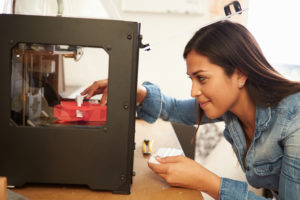A number of factors, including lack of guidance and management issues, are leading educators to restrict students’ access to 3D printers, according to a survey from Y Soft Corporation, an enterprise office solution provider.
Surveyed educators overwhelmingly cited motivation, creativity and use of technology with STEAM subjects as reasons their institutions use 3D printers in courses.
Forty-two percent of those surveyed said it is “very common” for students in their institution to have access to 3D printing, and 58 percent said it is “very exceptional” to have such access.
The survey asked educational 3D printer owners a broad set of questions about 3D printing use to determine how educators include 3D technology in their classrooms. Most institutions who own 3D printers own between 2 and 5 (38 percent), with 28 percent of institutions owning between 6 and 20.
Why Student Access is Difficult
Overall, 35 percent said student access to 3D printers is fairly or very difficult. Thirteen percent of those surveyed said it is very easy for students to access 3D printers and 52 percent said it is fairly easy as long as a process is followed.
(Next page: The three areas where support for 3D printers is lacking)
Respondents said 3D printers are lacking in three main areas, and those areas are prompting educators to restrict students’ access to the devices:
• Inability to manage and control access to the 3D printer. Consequently, 3D printers are locked in a room requiring special access, available only during special hours, or alternatively, the student has to ask the teacher/teacher aid to print the model. Therefore, the 3D printer is often under-used.
• Educators are not able to manage 3D printing time and materials costs in order to allocate expenses per classroom or department. Also, in schools where pay-to-print systems exist for paper printing, no similar systems exist for 3D printers.
• Lack of guidance on adding 3D printing to course curricula.
“We hear from schools that they buy 3D printers, but often lock them up so students and users cannot access them because there is no way to manage access and costs associated with their use,” said Tim Greene, IDC Research Director. “It defeats the purpose of the 3D printer in education which is meant to motivate student learning. In the end, the printer goes unused.”
Twenty-nine percent of survey participants said their 3D printing program is “very successful” and they “could not live without it;” 67 percent said their institution’s program is somewhat successful, with both positives and negatives; and 4 percent said their program is unsuccessful.
Can’t Quite Justify ROI?
Despite respondents indicating a lack of a full solution and an inability to justify ROI (90 percent), educators are not ready to give up–77 percent said they intend to slightly or dramatically increase the purchase of 3D printers.
Although respondents said they mainly use 3D printing for STEAM, 45 percent said students use it in other areas as well.
Adoption of 3D printing is primarily in higher education, including university research institutions (55 percent). This may be due to the fact that there is no mandate as yet to include 3D printing in K-12 education. However, 23 percent of respondents said they do introduce 3D printing in elementary schools.
The survey was conducted by Dimensional Research in November 2016.
- Where are microcredentials today–and where are they going? - April 22, 2024
- First-generation students are more likely to seriously consider leaving college - April 17, 2024
- How higher ed can meet workforce needs - April 15, 2024

